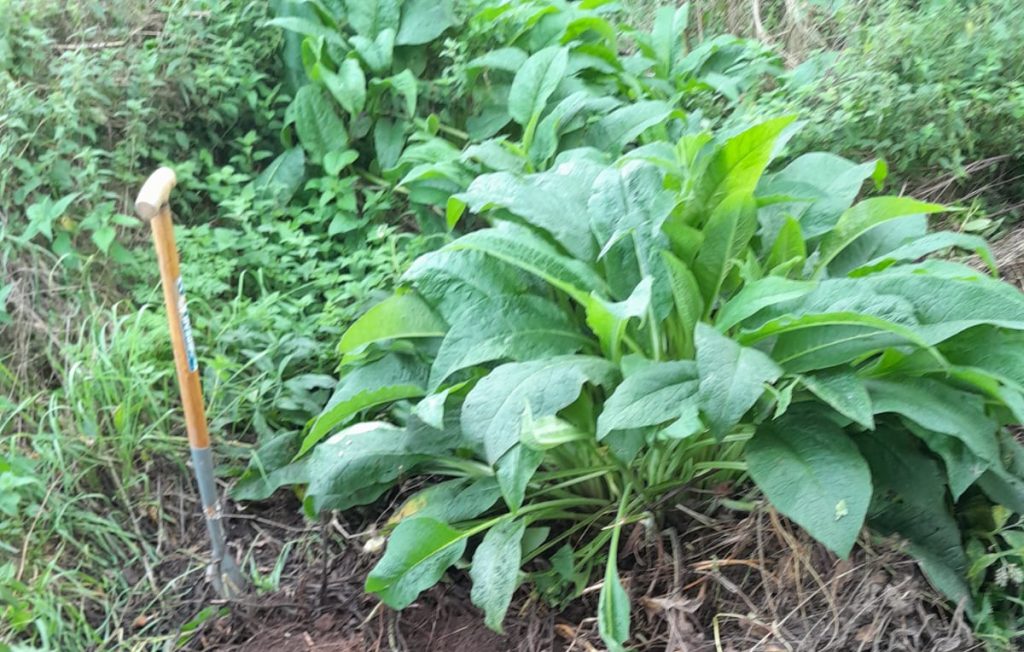
Comfrey can be found growing wild around the countryside. It’s a brilliant absorber of nitrogen, phosphorous and potassium so a very useful plant in situations where we need to mop up nutrients before they get into waterways – for example where dirty water is running off a farm yard towards a river.
It’s a perennial and will happily grow in most locations. It flowers from early spring and bees and other pollinators love it. It puts down big deep roots and pulls nutrients up into its leaves. The plants can be cut and ensiled along with grass or it can be used for liquid fertiliser, as a compost accelerant or for mulch – great for putting over potatoes or soft fruit.
There are different types which can grow from seed or from root cuttings and it competes well with weeds and grass. Our native varieties can go a bit mad as they grow from seed but the Russian variety is sterile so only grows from cuttings, better if you want it to stay in one place.
The Water Innovation Network has used comfrey in swale systems to absorb farmyard dirty water and so far it seems to be mopping up everything with no water reaching the end of the swale system at all. They will be hosting some visits to the farms on 10th and 18th October – they will cover how to check your own rivers and how to capture and recycle nutrients. Book here.

